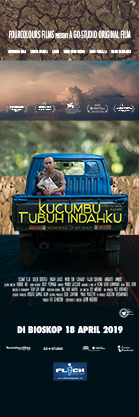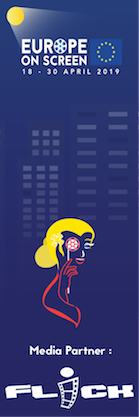
Selasa, 05 Agustus 2014 - 12:59:45 WIB
Surat Terbuka Martin Scorsese Untuk Mendukung Kodak
Diposting oleh : Haris Fadli Pasaribu (@oldeuboi) - Dibaca: 4300 kali
Minggu lalu terbit kabar jika beberapa sutradara kenamaan Hollywood menyatakan dukungannya terhadap perusahaan produsen stok film seluloid, Kodak, yang tengah berada di ambang penutupan. Nama-nama sutrdara tersebut adalah Quentin Tarantino, Christopher Nolan, Judd Apatow, dan J.J. Abrams yang telah bersatu guna melobi para petinggi studio film untuk tetap menggunakan stok film yang diproduksi oleh Kodak.
Sebagaimana kita ketahui bersama, penggunaan teknologi digital sudah hampir menyeluruh oleh para penggiat film. Dan menggunakan kamera digital tentunya mengurangi ongkos produksi secara lebih signifikan dan juga menghemat waktu produksi ketimbang menggunakan stok film seluloid.
Akan tetapi bagaimanapun film seluloid adalah bagian dari sejarah film dan begitu juga Kodak sebagai produsennya. Tidak hanya nilai sentimentalia akan tetapi secara artistik visual yang dihasilkan oleh film seluloid tidak bisa digantikan oleh kamera dgital. Bagaimana cantik dan canggih kamera digital tersebut.
Baru-baru ini tambah lagi nama sutradara papan atas yang menyatakan dukungannya terhadap Kodak. Beliau adalah Martin Scorsese. Meskipun dalam Hugo (2011) sudah menggunakan kamera digital, tapi Scorsese masih percaya akan kekuatan film seluloid yang dibuktikan dengan kembali menggunakan seluloid dalamThe Wolf of Wall Street (2013), meskipun film dirilis secara keseluruhan dalam bentuk digital
Ia menyatakan dukungannya dengan merilis sebuah surat terbuka seperti di bawah ini, seperti yang dikutip dari The Playlist:
We have many names for what we do – cinema, movies, motion pictures. And…film. We’re called directors, but more often we’re called filmmakers. Filmmakers. I’m not suggesting that we ignore the obvious: HD isn’t coming, it’s here. The advantages are numerous: the cameras are lighter, it’s much easier to shoot at night, we have many more means at our disposal for altering and perfecting our images. And, the cameras are more affordable: films really can be made now for very little money. Even those of us still shooting on film finish in HD, and our movies are projected in HD. So, we could easily agree that the future is here, that film is cumbersome and imperfect and difficult to transport and prone to wear and decay, and that it’s time to forget the past and say goodbye – really, that could be easily done. Too easily.
It seems like we’re always being reminded that film is, after all, a business. But film is also an art form, and young people who are driven to make films should have access to the tools and materials that were the building blocks of that art form. Would anyone dream of telling young artists to throw away their paints and canvases because iPads are so much easier to carry? Of course not. In the history of motion pictures, only a minuscule percentage of the works comprising our art form was not shot on film. Everything we do in HD is an effort to recreate the look of film. Film, even now, offers a richer visual palette than HD. And, we have to remember that film is still the best and only time-proven way to preserve movies. We have no assurance that digital informaton will last, but we know that film will, if properly stored and cared for.
Our industry – our filmmakers – rallied behind Kodak because we knew that we couldn’t afford to lose them, the way we’ve lost so many other film stocks. This news is a positive step towards preserving film, the art form we love.


